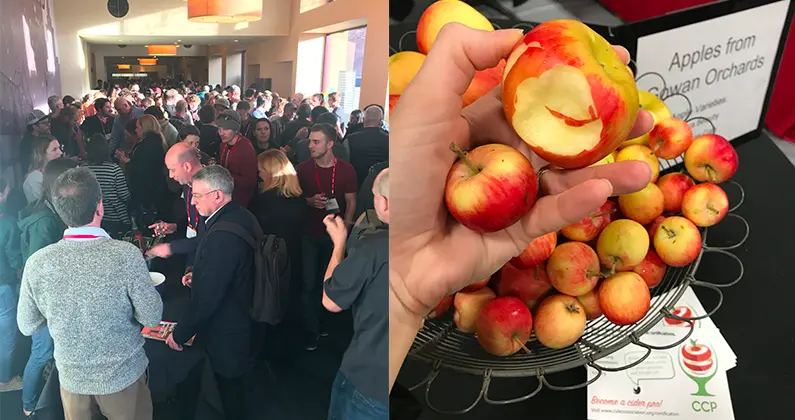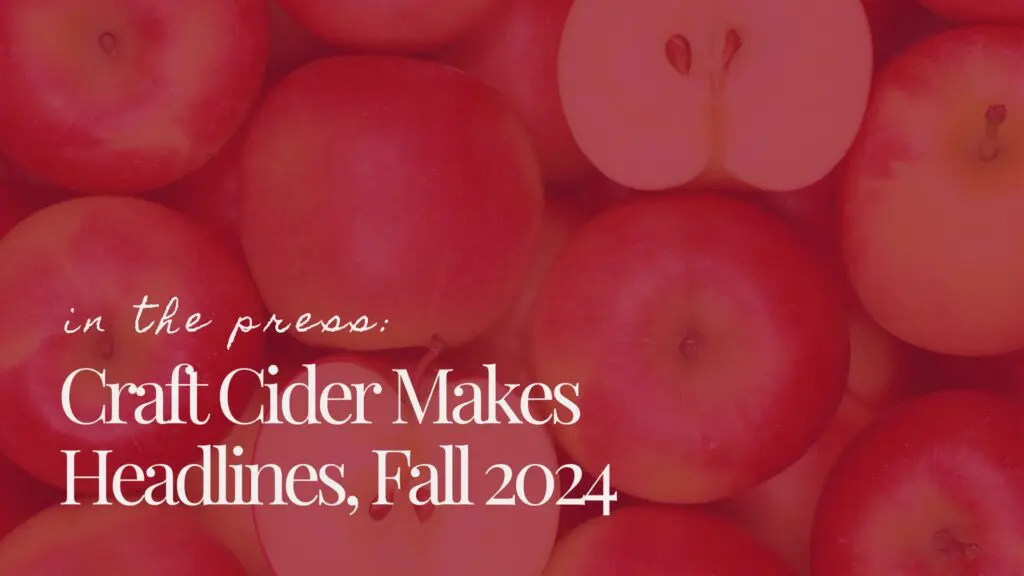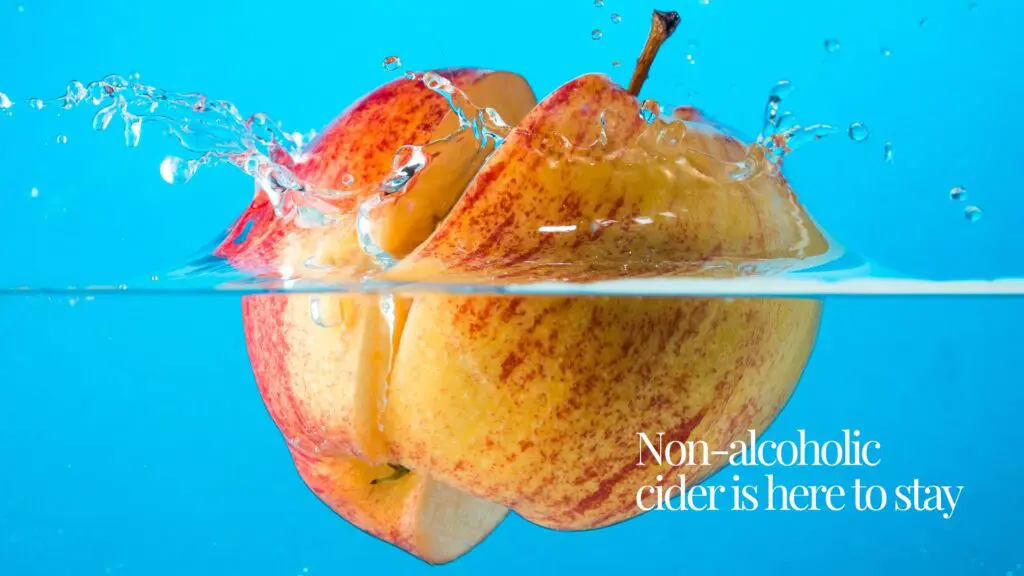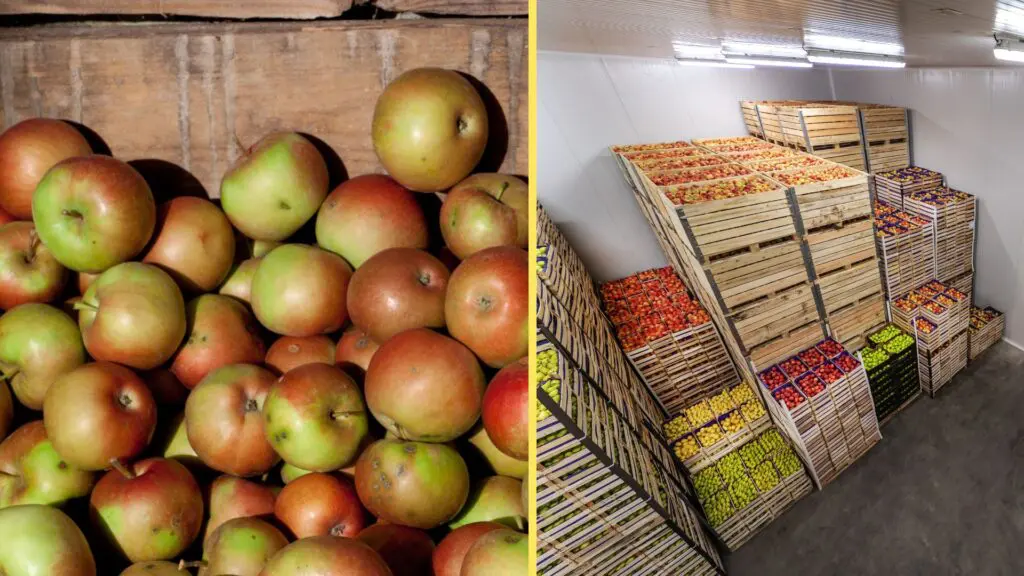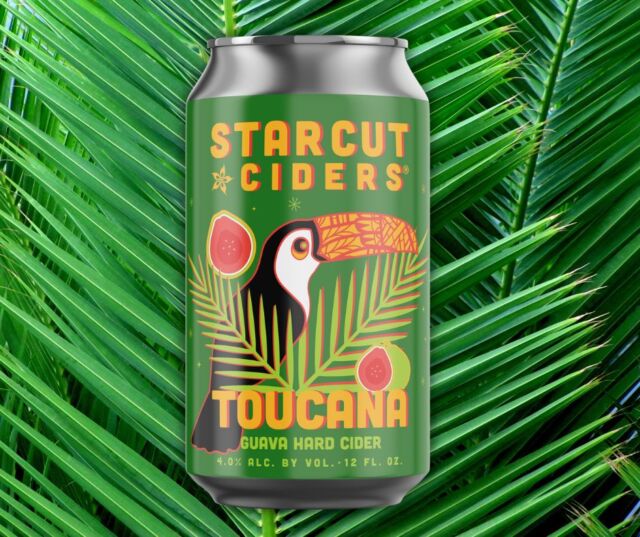I got a sunburn at CiderCon 2020 last week. In the host city of Oakland, California, the American Cider Association‘s 10th annual Cider Conference kicked off Bay Area Cider Week in the 70-degree sun and, with the previous year and next year’s conferences in Chicago, it truly was a celebration. To be fair, I’m naturally fair skinned and January in my hometown of Seattle isn’t revered for its winter UV exposure, but this put a special icing on the cake of a week dedicated to cider.
Though attendance was slightly lower than past conferences, CiderCon brought in over 1,000 attendees from across 35 states and 11 countries, touting the largest trade show yet. The American Cider Association offered its third seating of the Certified Pommelier exam, an advanced, second-level designation of its Certified Cider Professional program geared toward beverage and hospitality industry professionals. More than 40 people sat for the test, with certificates to be announced and handed out in the end of February.
Programming varied from marketing to business operations, with production and technical workshops put on by the Cider Institute of North America, popular sessions featuring topics such as orcharding, carbon and dry farming, identifying faults in cider, social media, tasting courses and others focused on the guest region of Irish cider.
Nielsen, Social Standards and Buzzoid presented in three separate sessions on market trends, providing data that I was keen to receive. However, numbers were pretty similar to last year: the cider market is 10 times bigger than it was 10 years ago, regional/local ciders sales are up 15% year-over-year (their share is now 40% nationally in off-premise sales and almost half of on-premise sales) and there was major growth in canned and flavored ciders. Within the top 50 cider brands, 28 are growing by double digits, from Bold Rock and Citizen Cider to Bishop, McKenzie’s, 2 Towns, Blake’s, Vander Mill, Tieton and Golden State.
But, according to all three data insight companies, there is an 800-pound gorilla in the Beverage Alcohol market that is giving cider its “highest consumer interaction” — hard seltzer.
The ready-to-drink (RTD) market is huge right now, from canned cocktails to canned ciders and hard seltzer is the “juggernaut” to watch right now, says Danny Brager, vice president of client services at Nielsen. His research showed that hard seltzer represented $1.6 billion in the last 52 weeks and is still growing well over 200%. He believes it is huge competition to cider, with a similar consumer (equal male-female, younger drinker demographic) and is also crushing it in retail with slim-fit cans.
Though he sees that cider is down about 4% across the country, he also says this is an opportunity for the industry. Hard seltzer’s success can be attributed to a few markers: health/wellness, drinking “better” (premiumization), interest in flavors (tastes/styles), convenience in packaging and purchasing (such as online) and the experience, which includes not just the drinking occasion but what comes with it.
“Change requires us to be more creative and adaptive than ever — in what and how we sell, and how we communicate that to the consumer,” Brager says, encouraging cidermakers to embrace buzzwords like “low calorie” and offer tasting room experiences but also keep authenticity in messaging and promote local/regional.
IWSR’s Americas Chief Operating Officer Brandy Rand shared similar yet encouraging information in her session on global cider trends. While hard seltzers are the driving force behind RTD sales in the United States — with a 43% share of the RTD market — IWSR finds that the consumer is looking for quality, taste, heritage, transparency and value, which are often competing against each other, and (no surprise) the future is in online, e-commerce sales. By 2024, IWSR forecasts that the e-commerce channel with be worth $45.5 billion in value.
Rand suggested U.S. cideries to enter growth markets, like Japan, South Africa and Australia, which are keen on making their own cider and trying others from around the globe. Though statistically IWSR finds the U.S. to be a beer-drinking country, wine is declining for the first time in years and the U.S. cider consumer is drinking domestic more so than from anywhere else.
Even though this left me feeling like cider was Jan and hard seltzer Marcia of “The Brady Bunch” (see outdated reference here), cider is still a frontrunner in the Beverage Alcohol market and isn’t turning back. The general excitement of attendees, the fledgling cideries there to learn — like Trillium Beverage‘s cidery, Thirsty Fox, the first cidery in India — and the eager trade vendors ready to break into the beverage were all encouraging to see.
It’s still cider’s time and we’re still here to enjoy it.

